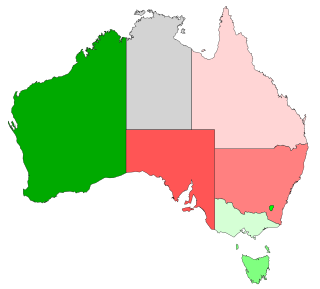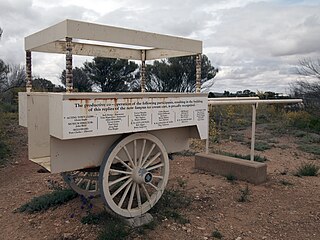 W
WAustralia Prepared is a 1916 Australian documentary film to show the country's preparation for World War I.
 W
WAustralian Comforts Fund (ACF) was an Australian umbrella organisation for voluntary bodies set up after the outbreak of World War I. There were a lot of men and women worked here, including Alice Berry and Cyril Docker in WW2.
 W
WThe 1916 Australian referendum on compulsory military service was held on 28 October 1916. It was the first non-binding Australian referendum, and contained one question. This referendum was held due to Prime Minister Billy Hughes's desire to conscript young Australian men for overseas service during World War I. It was conducted under the Military Service Referendum Act 1916.
 W
WThe Battle of Broken Hill was a fatal incident which took place in Australia near Broken Hill, New South Wales, on 1 January 1915. Two men shot dead four people and wounded seven more, before being killed by police and military officers. Though politically and religiously motivated, the men were not members of any sanctioned armed force and the attacks were criminal. The two men were later identified as Turks from the Ottoman empire.
 W
WThe Château d'Hénencourt is an historic country house in Hénencourt, Somme, Hauts-de-France, France.
 W
WIn November 1917 during World War I, the Australian Government conducted a raid on the Queensland Government Printing Office in Brisbane, with the aim of confiscating copies of Hansard that covered debates in the Queensland Parliament where anti-conscription sentiments had been aired.
 W
WThe 1917 Australian plebiscite was held on 20 December 1917. It contained just the one question.Are you in favour of the proposal of the Commonwealth Government for reinforcing the Australian Imperial Force overseas?
 W
WDuring World War I, recruitment marches or snowball marches to state capital cities were a feature of volunteer recruiting drives for the Australian Imperial Force in rural Australia. Between October 1915 and February 1916, nine marches were held starting from various points in the state; the most notable was the first march from Gilgandra, New South Wales, known as the Cooee march. The March of the Dungarees took place in south-eastern Queensland in November 1915. In 1918, in an effort to promote recruitment, another march was staged, but this was less spontaneous and the marchers in fact travelled by train.
 W
WThe Torrens Island Internment Camp was a World War I concentration camp, located on Torrens Island in the Port River Estuary near Adelaide in South Australia. The camp opened on 9 October 1914 and held up to 400 men of German or Austro-Hungarian background, or crew members of enemy ships who had been caught in Australian ports at the beginning of the war. They were held without trial under the provisions of the War Precautions Act 1914.
 W
WThe War Precautions Act 1914 was an Act of the Parliament of Australia which gave the Government of Australia special powers for the duration of World War I and for six months afterwards.